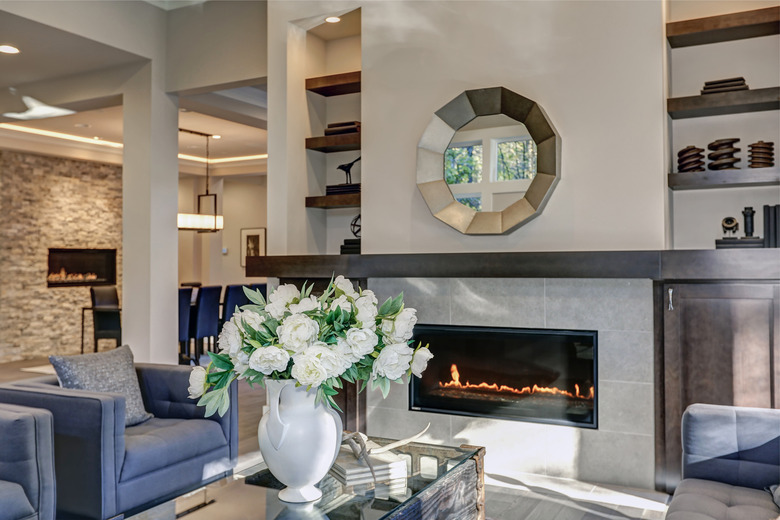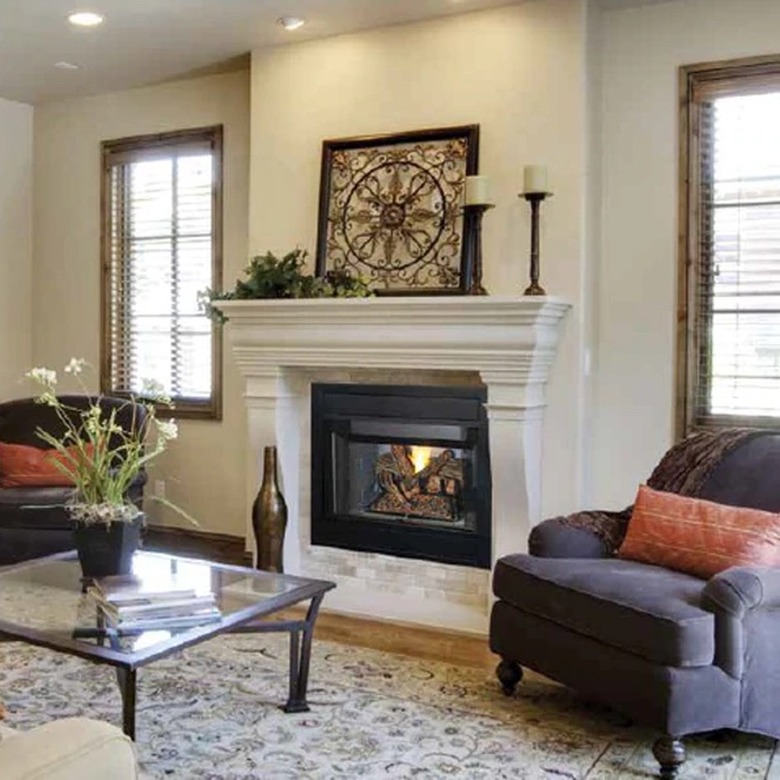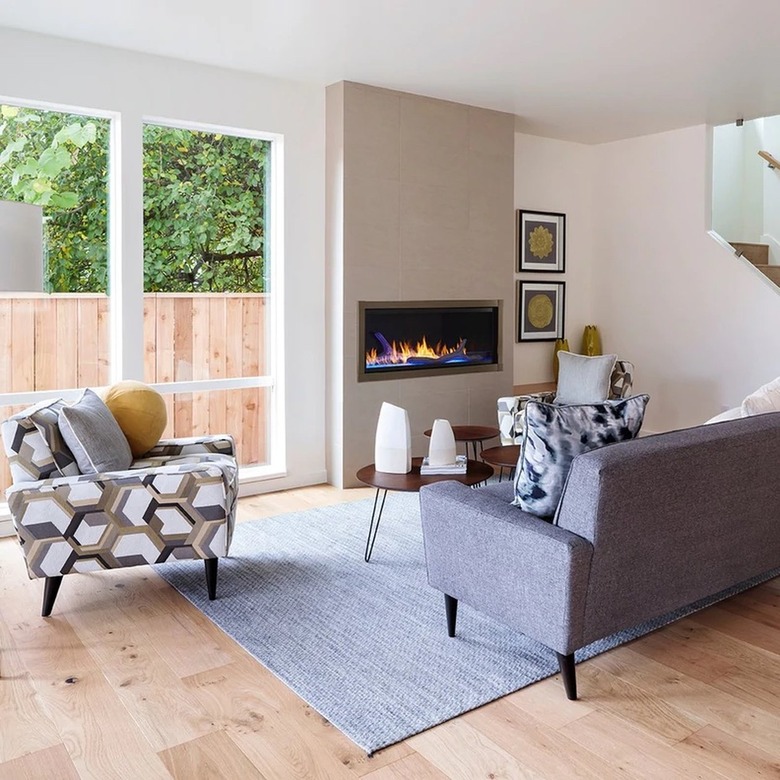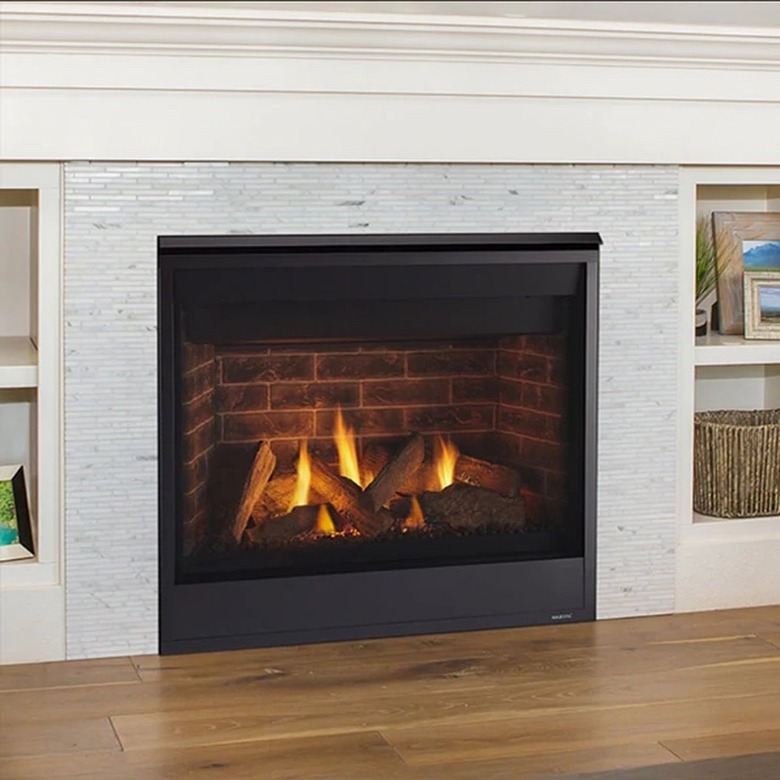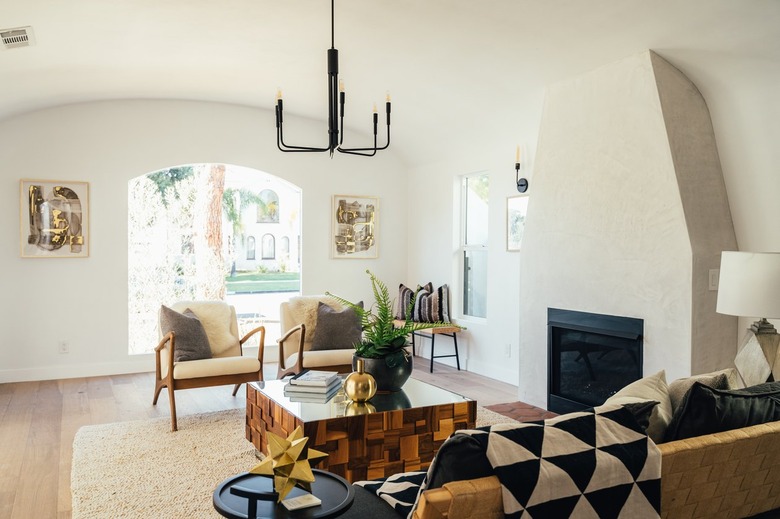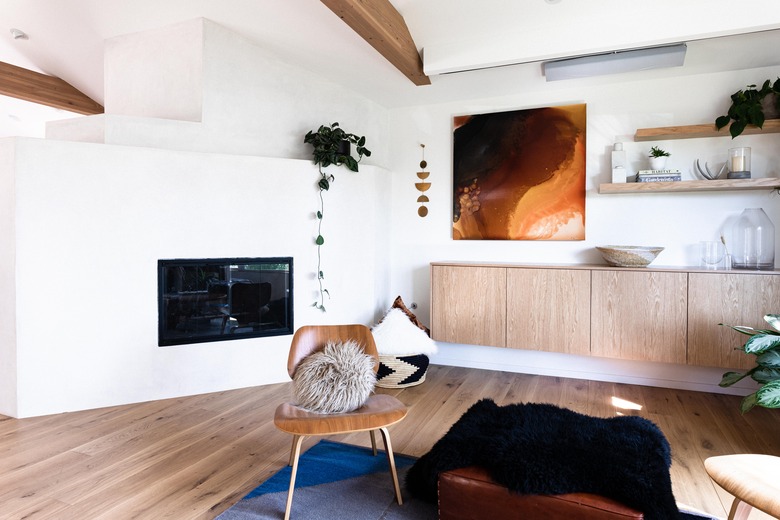Thinking About Gas Fireplace Installation? Read This First
Nothing is more atmospheric than the dancing flames of a real fire, and if a gas fireplace installation is on your list of priorities, you probably have some questions. When looking for a new fireplace, should you go with an insert that fits into your old masonry fireplace or for a direct vent model that has its own new surround and mantel? Where would a gas fireplace actually work in your house? Is fireplace installation something you can do yourself, or do you need to hire a pro? And then there's the top question on almost everyone's mind: What are the installation costs?
Here's everything you need to consider before you install a gas fireplace.
Gas Fireplace Installation Options
Gas Fireplace Installation Options
Gas fireplaces come in a range of styles and configurations. The first — and most important — decision to make involves the type of venting you want. This helps to determine not only the type of fireplace you'll get but also where it can go. You have three options for venting: B-vent, ventless, and direct vent.
B-vent Fireplace
The flame of a B-vent fireplace (sometimes just called a vented fireplace) is like that of a wood fireplace. It's exposed and draws the air needed for combustion from the room in which it's located, and it exhausts combustion gases through a flue that extends vertically through the roof. That type of arrangement sounds suspiciously like a chimney, and in fact, a B-vent fireplace is a great option if you have an existing fireplace and want to convert it to gas. You simply have to run a gas line to the fireplace and retrofit the chimney flue with a gas vent after first, of course, doing your part to keep chimney sweeps in business by booking one for chimney cleaning.
Ventless Gas Fireplace
A ventless gas fireplace, as its name suggests, doesn't need a vent. It's designed to recycle combustion gases inside the firebox until all that remains to be circulated in the room is carbon dioxide and water. Vent-free fireplaces are not legal in California or Canada, and are tightly regulated in some other states. But because ventless gas fireplaces have no vent, they are the easiest type of gas fireplace to install.
Direct Vent Fireplace
In terms of design flexibility and the number of places in the home it can be located, a direct vent fireplace is the best choice for most homeowners. It vents through a coaxial (double-wall) vent pipe that both pulls in fresh outside air to feed the flames and exhausts combustion gases outdoors. The vent pipe does not have to run vertically and can be routed through an exterior wall, and the sealed firebox prevents the flame from creating drafts in the room the way a wood-burning fire does. Although you'll need a plumber to run gas lines, you can DIY one of these yourself if you have average carpentry skills.
Gas Fireplace Costs
Gas Fireplace Costs
The best place to install a direct vent gas fireplace is in front of an exterior wall because that allows you to poke the vent through the wall and minimize the amount of vent pipe you need. That isn't the only place it can go, though. If your house has brick siding, you can run the vent vertically through the roof, just like that of a B-vent fireplace, or if you want the fireplace in a living room with no exterior wall, you can route the vent through the ceiling and out through an attic wall.
Once you pick a place for the fireplace, it's off to the showroom to shop for the best model. Prices range from $1,000 to $3,000 but beware because the cost of the firebox probably won't include all the accessories you might need, including an optional blower or gas log set. Count on an extra $200 to $600 to fully accessorize your fireplace. You'll also incur an expense to get a gas line to the fireplace, and this will vary according to whether or not you already have a natural gas or propane pipe nearby to tie into. Plumbers often charge by the linear foot, with $15 to $25 per linear foot being typical, and most homeowners end up paying around $800 for gas line installation.
You should also have the vents professionally installed by an HVAC contractor to ensure they are airtight and have the proper clearances from combustible materials. The combined cost of labor and materials for vent installation is about $1,300 on average, bringing the total cost for the fireplace and the professional installation labor to a range of $3,300 to $5,700. That doesn't include the materials and labor you supply to frame the gas fireplace insert into the wall and install a hearth and mantel if your plans call for them.
An Overview of Gas Fireplace Installation
An Overview of Gas Fireplace Installation
Even though some key parts of fireplace installation are best left to licensed pros, it's good for homeowners of the DIY persuasion to know what's involved, and some may even elect to do most of the work themselves. This decision should be made in consultation with local building authorities because parts of the installation that require a permit, such as installing gas lines, usually need to be done by licensed pros.
1. Choose a Fireplace and a Location for It
The question of which comes first, the fireplace or the location, is a bit like the chicken or the egg. You may fall in love with a particular model, in which case it's simply a matter of finding the best place for it. On the other hand, you may already know you want a fireplace in the living room or in a bedroom, in which case you'll be looking for a model that fits there.
Once you've settled on a general location, which is ideally near an exterior wall to make venting easier, make a mock-up of the fireplace and set it in place to give yourself an idea of how it will impact the feel of the room. Is it too close to the sitting area for comfort or not close enough? Will furniture or existing architectural features block the view in any part of the room? It's a lot easier to move it around now than it will be once you've started installation. Once you've settled on a location, draw an outline on the floor.
2. Install the Gas Line
Arrange for a plumber to install the gas line. Depending on the fireplace location, it will stub out from the wall or the floor and will terminate with a shutoff valve to which you can connect the fireplace with a separate length of pipe or flexible gas line. Flexible line is preferable as it won't break if the fireplace moves suddenly because of an earthquake or some other disruption.
3. Build a Hearth for the Fireplace
This is the part where you get out your carpentry tools and start construction. The hearth for a gas fireplace must be fireproof because it's all that's between the burner and the floor. Build the frame from framing lumber and plywood and cover it with an appropriate fire-resistant material, such as stone (slate, granite, or marble), brick, tile, or even concrete.
Check the hearth specifications in the installation manual for your fireplace before you begin construction. Depending on the type of fireplace, the hearth may need to extend a certain distance in front of it, but that usually isn't a requirement for gas inserts. If you're going to build a wall to frame the fireplace and no hearth extension is required, build the front of the hearth platform flush with the front of the fireplace so you can install a wall covering around the entire firebox.
4. Measure for the Vent
Set the fireplace in position, attach a 6-inch length of straight pipe to the collar on top of the firebox, and attach a 90-degree elbow to that. Don't seal these pieces in place yet. Turn the elbow to face the wall and measure the distance from the opening to the wall. This tells you how long the horizontal vent needs to be.
5. Frame an Opening for the Vent
Remove enough drywall from the wall behind the fireplace to allow you to cut a hole for the vent. If there's a stud in the way, you can't remove it unless you install a header and trimmers to support the wall (as if you were framing a window), so cut a rectangular section of drywall that extends all the way to the floor. Construct a frame in the wall that's the same size as the interior firestop, which is the flat metal plate that surrounds the actual vent. Replace the drywall and finish it, leaving the square opening for the vent and firestop.
Tip
If there are any wires in the wall, call an electrician to have them rerouted.
6. Cut Through the Exterior Siding
Drill holes through the four corners of the opening in the interior wall and use these holes as references for a matching opening in the siding. Draw lines to connect the holes and cut along the lines with a circular saw.
7. Install the Vent
Run a bead of latex caulk on the drywall surrounding the hole in the interior wall, press the firestop into the hole, and screw it to the wall. Go outside and feed double-wall vent pipe through the hole in the firestop. If you aren't using a telescoping vent, which is recommended, be sure to feed enough to make the length inside equal to the distance you previously measured. Seal the pipe to the firestop with a bead of high-temperature silicone caulk.
Go back outside to install the outdoor firestop and vent cap. Fit the vent pipe onto the section that goes indoors, screw the firestop to the wall, and seal around it with caulk. If the firestop doesn't have a drip cap, which is a length of flashing to keep off the rain, install one underneath the siding just above it.
8. Connect the Vent and Gas to the Fireplace
Seal the 6-inch length of duct to the collar on top of the firebox using high-temperature silicone caulk, braided rope, or whatever is recommended by the fireplace manufacturer. Attach the elbow, point it to the wall, and connect it to the vent coming from the wall. Make any necessary electrical connections and then finish up by connecting the fireplace to the gas valve with an appropriate connector.
